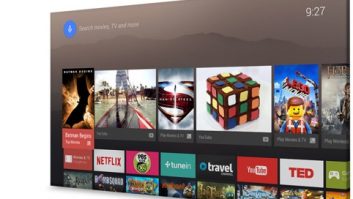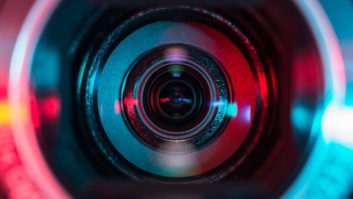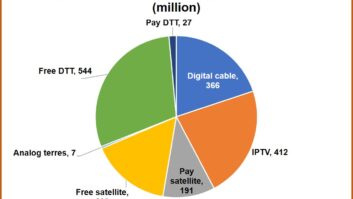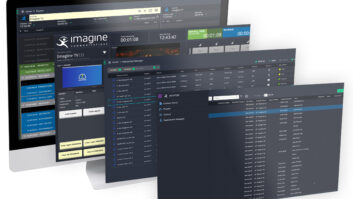The TV broadcasting industry has gone through a huge amount of change in recent years – all driven by the ongoing digital revolution. On the one hand, this has opened up a world of new possibilities, enabling broadcasters to provide new services, drive operational efficiencies and reach different audiences.
On the other hand, the increasing focus on the internet and other technology-driven trends has significantly intensified the level of competition in the industry. Traditional broadcasters are now having to compete with a wide range of streaming services, all of which have a global reach and the expertise to quickly capitalise on the technological opportunities that come their way.
This has accelerated the consumer shift towards on-demand services. The likes of Netflix and Amazon Prime are able to offer the user experience, range of content and video quality that consumers are looking for. Then there’s user-generated content from influencers and the public, which is enhancing the challenge even further by forming close, direct relationships with their loyal following.
As such, traditional broadcasters are having to rethink their approach. Although many are adopting OTT delivery models to meet customers’ evolving expectations around on-demand content, there is still a technical disconnect between how live content is distributed and how it is produced.
Mind the gap
The big issue facing linear TV providers is that they are currently restricted when producing content. They are restricted by physical connections, i.e. the cameras they have access to for each show. A cooking show and a news show will both have access to a specific, pre-determined set of cameras, presenting a clear lack of flexibility when it comes to quickly adding new feeds.
Having production processes and technology designed in this way makes it difficult for video content to be contributed upstream. For example, when broadcasters create a live news show today, the production pipeline tends to be pre-defined and limited by their SDI infrastructure. They can only use sources and cameras – whether connected to the SDI switch in the newsroom or remotely connected via satellite links – that have been plugged into the environment hours before the live event happens. Spontaneously adding a new camera to the production pipeline during the show is very complicated, and even more so if it is a different kind of camera – whether that’s a smartphone or professional camera.
The syncing, mixing and curation of live content is all carried out in the local, high bitrate SDI domain. This means that the cameras and feeds that will be used during the broadcast have to be connected and established in the process in advance, and that the curated output is limited to those sources only.
This continuing reliance on legacy processes and specialist equipment as opposed to web-based technologies and today’s highly capable consumer devices – even though the internet has been well proven as a distribution channel – illustrates the disconnect that has emerged between content distribution and production. The distribution model is no longer the limiting factor it once was and, as a result, more broadcasters are starting to realise that there are now alternative options available.
The simple truth is that TV needs to transform, as the way content is being produced and distributed is currently out of sync. This gap must be effectively bridged if broadcasters want to remain competitive in the future.
The future calls
It has quickly become clear that successfully re-defining broadcast comes down to incorporating web-based technologies throughout the end-to-end content production process. By moving the production stack over to the same technology as the distribution stack, broadcasters will open up new ways to produce and curate content.
For example, taking a web-based approach means any connected device can contribute to the production process. Broadcasters can quickly and easily connect a wider range of devices, such as smartphones, via the internet and gain access to different types of content – which can be controlled by policies rather than by physical access.
Roaming ‘citizen reporters’ could share live video from their smartphones on-site at events or incidents to add local insight to news reports. Team coaches could provide a closer and more intimate perspective than broadcast cameras, or backstage content recorded by a popular music artist could be used as part of an awards programme such as the Grammys.
Also, by adopting a web-inspired approach that treats video sources as global resources, producers in the curation process can find themselves accessing and tapping into a larger repository of both live and on-demand content. And since the distribution is unicast anyway, significantly more content variations can be produced and delivered.
As a result, the viewer experience and content can be personalised to the user and context. Content can be selected and curated based on users’ interests and location in a cost-effective way. That’s the beauty of cloud and the internet. Content formats that benefit from ‘public’ contributions – e.g. local news or sports and entertainment – can significantly benefit from the speed, flexibility and scalability that web-based technologies can provide.
This is all just scratching the surface of what’s possible. But these possibilities will never come to fruition if broadcasters aren’t prepared to think differently. They must recognise the importance of merging upstream and downstream processes, as well as adopting new technologies to help them become more relevant.
Ultimately, the future of TV will be different. In fact, the future of TV must be different if broadcasters want to stay relevant in an extremely competitive TV landscape. We’ve proven that the internet can be used as a distribution channel and now the production side needs to catch up. It’s time to embrace the next generation of TV.







